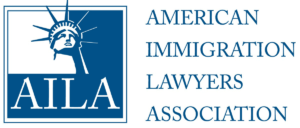Many Options For Employment-Based Work Visas
A foreign national has many temporary and permanent immigration categories available to them to enter the U.S. to engage in employment or to move permanently to the U.S. At Sharma Law Offices, LLC, we understand the complexities involved in U.S. employment-based immigration processes. Led by our attorney, Asheesh Sharma, our firm offers unparalleled expertise in a wide array of employment-related immigration services. While foreign nationals outside the U.S. must obtain a work visa or an immigrant visa at the U.S. Consulate, those already in the U.S. may be able to change their status to a status that allows them work or adjust their status (I-485) and obtain a lawful permanent residency (a.k.a. Green Card). Employment based, nonimmigrant categories include, amongst others, H-1B (specialty occupation), L-1 (intracompany transfer), O-1 (professionals with Extraordinary Ability or Achievement), E-3 (professionals from Australia), TN (professionals from Canada or Mexico), H-1B1 (professionals from Chile and Singapore), R-1 (Religious Workers), B-1 (Domestic Workers). Employment based immigrant categories include, amongst others, EB-1A (Alien of Extraordinary Ability), EB-1C (Multinational Manager or Executive), PERM (Labor Certification). Though not specifically an Employment Based category, some foreign nationals in the U.S. are also able to obtain lawful permanent residency via U Status. Whether you're seeking a H-1B, L-1, E-2, E-3, TN, U, R-1, H-1B1 visa, our team is here to guide you every step of the way.
Extensive Experience You Can Trust
With years of experience in employment-based immigration, Sharma Law Offices has a proven track record of successful cases. Our nuanced understanding of U.S. immigration laws ensures that your case is in capable hands.

Comprehensive Immigration Services
We specialize in handling the following employment-based immigration matters:
- H-1B Visas - For specialized workers in fields like technology, healthcare, and more.
- L-1 Visas - Ideal for intracompany transfers looking to work in managerial or executive roles.
- E-2 Visas - For entrepreneurs and investors aiming to invest significantly in a U.S. business.
- E-3 Visas - Specifically tailored for Australian citizens in specialized occupations.
- TN Visas - For Canadian and Mexican professionals under the NAFTA agreement.
- U Visas - For victims of certain crimes willing to assist law enforcement agencies.
- R-1 Visas - For religious workers coming to the U.S.
- H-1B1 Visas - An alternative to the H-1B visa, specifically for professionals from Singapore and Chile.
How an Employment-Based Green Card Can Benefit You and Your Family
If you're seeking long-term residency in the United States, an employment-based Green Card can be your pathway to a life filled with opportunities for you and your family. At Sharma Law Offices, LLC, we specialize in assisting clients through the complex legal process to attain employment-based Green Cards. Here's why this option may be the perfect solution for you.
- Build a Secure Future in the U.S.
With an employment-based Green Card, you're not just securing a job in the U.S.; you're also laying the foundation for a stable, prosperous future for your family. You'll gain access to the American education system, healthcare services, and social benefits, enriching your quality of life. - Broad Spectrum of Career Opportunities
Having a Green Card unlocks a multitude of career opportunities. You're not limited to a specific employer or field, giving you the flexibility to shape your career path as you see fit. - Permanent Residency for Family Members
One of the greatest advantages of an employment-based Green Card is that it often allows for your spouse and children under 21 to obtain permanent residency status as your dependents. This means that your family can live, study, and work in the U.S., all while enjoying the country's benefits and freedoms. - Pathway to U.S. Citizenship
After maintaining Green Card status for a certain number of years, you become eligible to apply for U.S. citizenship, a step further in solidifying your family's presence in the United States.
Why Choose Us?
Expertise: Asheesh's extensive legal education includes three law degrees from reputable institutions, including two LL.M degrees: one from George Washington University Law School in Washington DC, and the other from the University of Georgia in Athens, Georgia.
Experience: With a practice spanning over 20 years, we've successfully represented a wide array of clients—from multinational corporations and startups to individual professionals.
Up-to-Date Knowledge: Asheesh constantly keeps up with the rapidly evolving landscape of immigration laws and policies, ensuring that you receive the most current and accurate legal advice.
Personalized Attention: At Sharma Law Offices, LLC, we don't just process cases; we build relationships. We provide tailored legal solutions to meet your unique needs.
Ethical and Compassionate Advocacy: Our strong ethical foundation and compassion for our clients' stories are at the heart of our practice.
Commitment
Asheesh Sharma and his team at Sharma Law Offices, LLC are committed to delivering an exceptional level of service, characterized by meticulous attention to detail, diligent case management, and a genuine desire to help you realize your American dream.
See What Our Clients Say
















